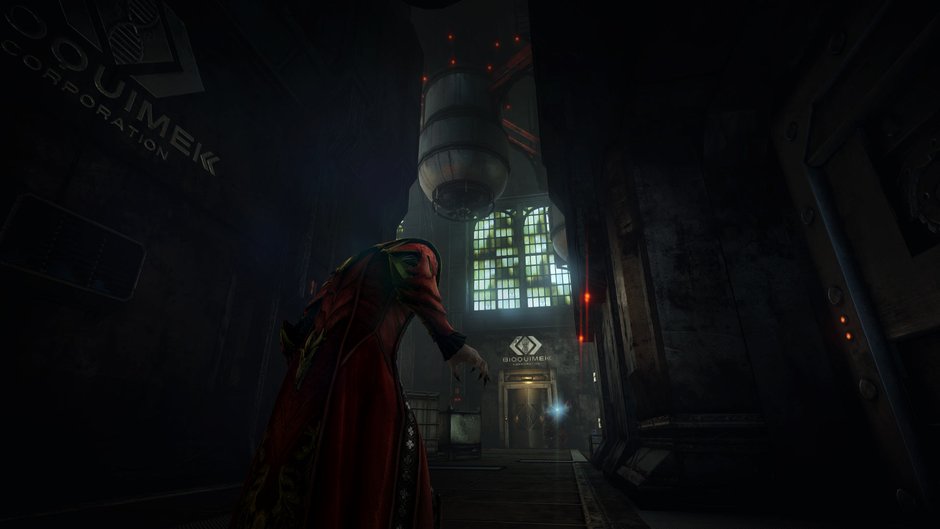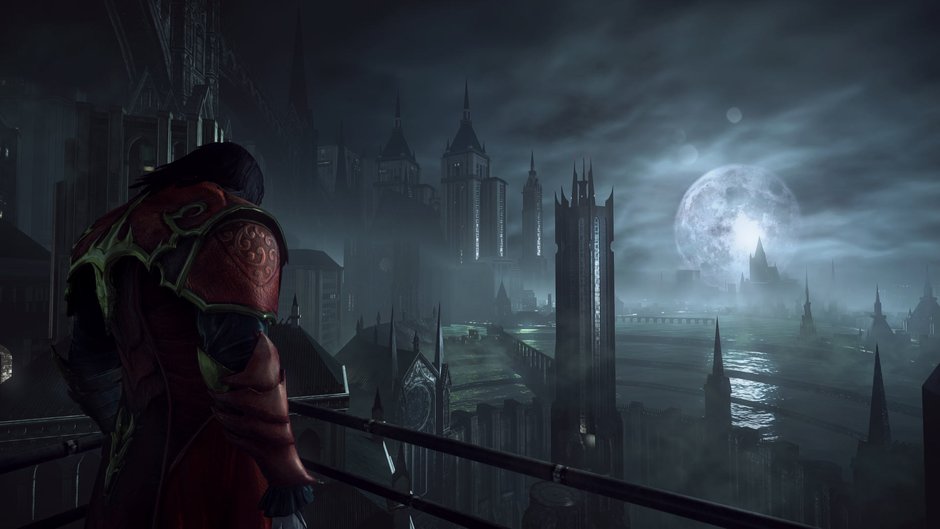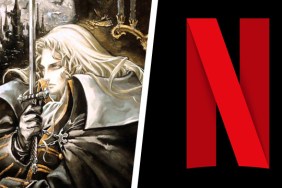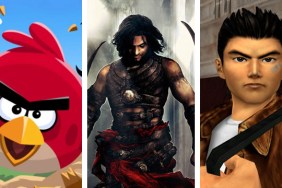Twice bitten.
In the past few years vampire media has taken a turn for the worse, rolling in its coffin with so-called sparkly biters and overwrought television serials more focused on sex-appeal. I’d like to think Dracula woke up briefly in the last ten years, went to his local cineplex, and declared “this sucks!” before transforming into a bat, fluttering up to the projection room, and ripping the projectionist's neck out.
Castlevania: Lords of Shadow 2 hopes to address the lacking vampire mediascape with a focus on the big boss himself, the originator, Dracula. For fans of the franchise, this means finishing the journey Gabriel Belmont set out on in the first game where he destroyed the four Lords of Shadow and became the prince of darkness. Awoken from slumber centuries later Gabriel “Dracula” Belmont, embodied with the franchise’s greatest forces, near limitless power, and up against Satan himself, suffers through some god-awful stealth.
The first Lords of Shadow from developer Mercury Steam turned a lot of Castlevania’s mythos on its head, giving players control over the first Belmont to ever strike fear into the heart of darkness. While Lords of Shadow 2 (and to a greater extent Mirror of Fate on 3DS or 360/PS3) explains away a lot of loose ends and plot holes from the previous game, including but not limited to two generations of successive Belmonts eager for their father’s demise, it’s impossible not to feel like the lore has been tied up into knots in service of cranking out one more game.
Bottom line, Satan is on his way back to Earth and he intends to, like, eat all the people or something. Basically we know Satan is bad. The Brotherhood of Light in the game’s bombastic tutorial sequence seemingly represent good, since that’s the group Gabriel was originally aligned with in the first game, but when the player is the vampire prince of heaven and hell, good and evil get a little blurred. Old buddy Zobek, voiced by Patrick Stewart, awakens Dracula, but it feels odd to be ordered around as the prince of darkness.
Dracula has visions of his wife and son and frequently warps back and forth between his castle and the surrounding city. The city features map rooms and magic energy stations throughout but the castle looks and feels like old Castlevania, complete with candles and other goodies to break open for power-ups and souls inside. The modern city has barrels and other industrial knickknacks to smash for health pickups and skill-purchasing soul currency too, so Castlevania fans will still feel at home with the amount of junk to break in every level.
Mercury Steam has strewn concept art throughout the game, so bust everything up with OCD, or Obsessive Castle Destruction. I abandoned the hunt for hidden goodies long before hitting 100%, but Lords of Shadow 2 has buckets of bloody action even after the credits roll. Exploration can be confusing at times, but once you beat the main story, you'll be ready to explore the next night. A unique map can confuse any vampire, but it's more Arkham-vania than Castlevania and 3D entries in the franchise will continue to struggle with emulating iconic 2D maps. Gabriel even uses a shadow whip in place of the famed Vampire Killer, but combat is still the best component of this adventure.
The whip, Void Sword, and Chaos Gauntlets make up most of Dracula’s attacks. Shadow whip has decent reach and builds up the focus meter with every uninterrupted lashing, depleting completely if Dracula is hit even once. At maximum, focus will cause magic power to drop from Gabriel’s enemies which can then fill either Void or Chaos energy bars with a push of the left or right analog sticks, respectively. With power in each meter, you can regain health by striking with the icy Void Sword or deal excessive damage with the fiery Gauntlets.
Dracula also gets throwable blood knives, a freezing blast that slows enemies down, and a colony of bats that can distract enemies both inside and outside of combat. Gabriel has a very responsive dodge maneuver as well that’ll bring back memories of 2D Castlevania dashing with some gorgeous visual effects. Leveling up weapons with repeated skill use also improves their look and power, turning the Shadow Whip from a low level wisp into a damaging blast of maleficent magical energy. Digging deeper into the game, fighting waves of enemies as Dracula feels as good as anything the franchise has ever offered.

I personally loved juggling enemies with all three of Gabriel’s weapons. Lifting an enemy with the Shadow Whip, wailing on them with the Void Sword to recoup health, and then slamming that enemy with a meteoric crack of the Chaos Gauntlets will please any action game fan. At its best, Lords of Shadow 2 feels on par with God of War 3 for viciously satisfying action gameplay on a mythological scale. At its worst, the game can feel like Mercury Steam merely sipped when they should have sucked.
Several narrative moments feel wasted, dashing whatever excitement was built up seconds prior. There are also a few weak boss fights early in the experience, but generally combat mechanics entertain and contribute to the momentum through to the end. I certainly felt eager to know the conclusion of Dracula’s adventure but just as the blood starts to stream, absolutely unnecessary stealth sequences clot the momentum.
Occasionally, Dracula will come upon Golgoth guards equipped with hell-fire cannons and a vicious sense of detection. I know the name of these enemies, despite my hatred for them, because on death Lords of Shadow 2 repeats tips that don’t really help at all and one of these names the guards specifically. I must have read the same unhelpful tip dozens of times. Now if only I could get a tip on which Mercury Steam designers to damn for all eternity.

While Dracula’s character and abilities have been given definite twists to fit within the Castlevania mythology, there’s really no purpose for the stealth in Lords of Shadow 2. Dracula can possess enemies briefly, the bat swarm can be used to distract the Golgoths, and at certain points our bloodlusting hero can even transform into a rat to solve navigation puzzles. None of this is entertaining compared to the speed and power Dracula displays in non-stealth rooms and all of it is wasteful of the engine, sound design, and mythos. Not only do these gameplay loops slow Dracula’s quest for vengeance, they haphazardly interrupt particularly engaging sequences of plot and combat.
Traversal gameplay might not be as deep as stealth, but I would still rather Dracula jump across a thousand chandeliers than sneak around the Golgoth guards. Make them powerful enemies in combat instead of gothic no-fun police. Frequently, Golgoths would turn well out of their pre-programmed path or detect me behind walls. While I could have played Lords of Shadow 2 straight through without these poorly executed mechanics, I put down the controller in frustration on more than one occasion. It’s enough to warn Castlevania newbies off.
Other parts of the game seem to suggest that Lords of Shadow 2 had a scrapped co-operative component, making the advent of an open-world adventure both a blessing and a curse. While the first game was hampered by controlled camera angles and some wonky controls, Dracula actually has bigger problems in Lords of Shadow 2. The experience will certainly satisfy anyone with the patience and determination to see Gabriel’s story through to the end, but you’d be forgiven for passing up the opportunity to exist trapped between light and darkness.
Despite some truly gorgeous visuals on now last-gen hardware and satisfying combat mechanics that feel as Castlevania as 3D gameplay could ever hope to get, Dracula gets hampered and hogtied far too frequently by poorly executed stealth. These mechanics have no place in an experience that, without them, could have totally satisfied your bloodlust.
PS3 developer code provided by publisher. Tested on Xbox 360. Also available on PC.
-
Mixed boss encounters
-
Incredible combat and appropriate challenge
-
Gorgeous environments and effects
-
Tight third-person controls, free camera
-
Confused, but well executed plot
-
All stealth mechanics and sequences
-
Needs better blend of fixed and free camera
-
Feels like an ode to PS One-era Castlevania








